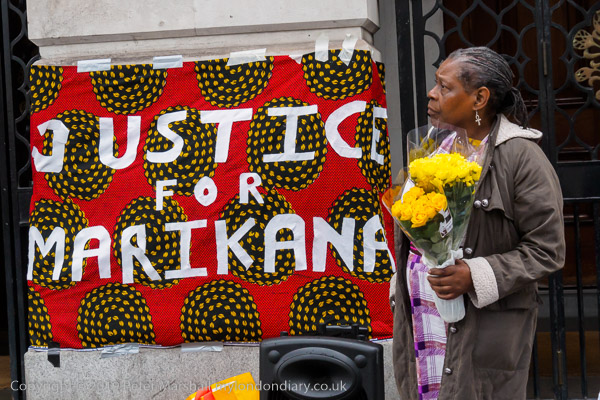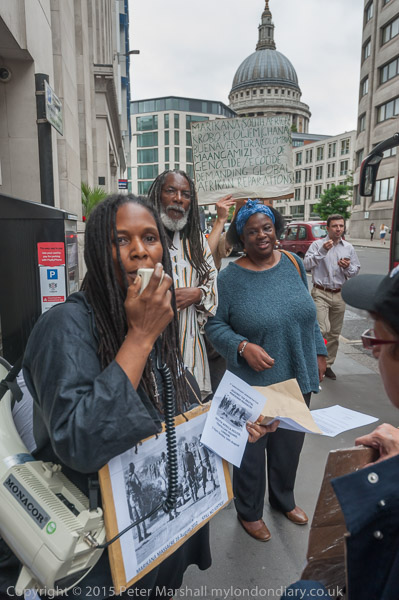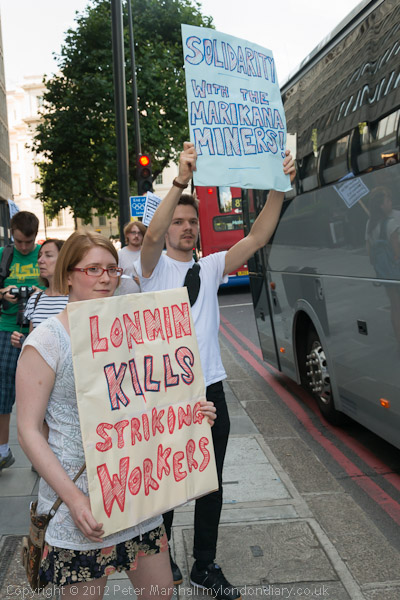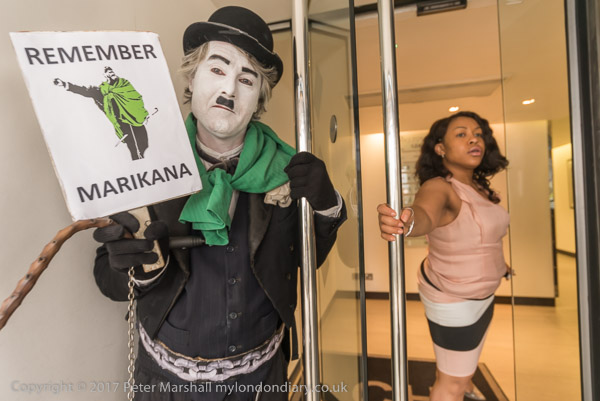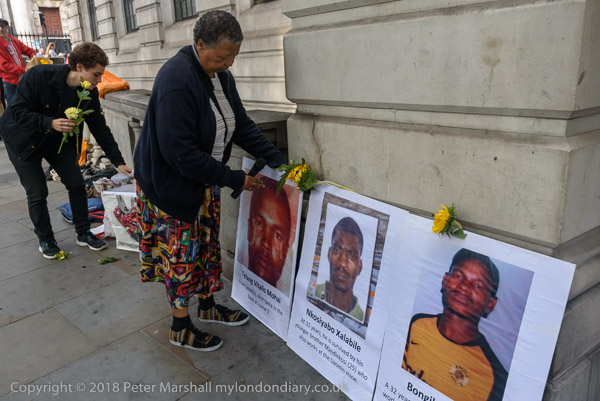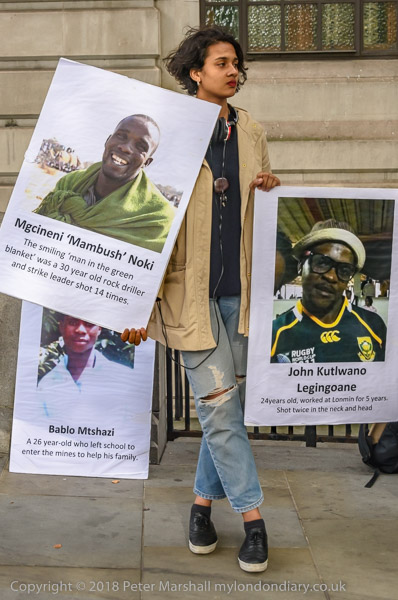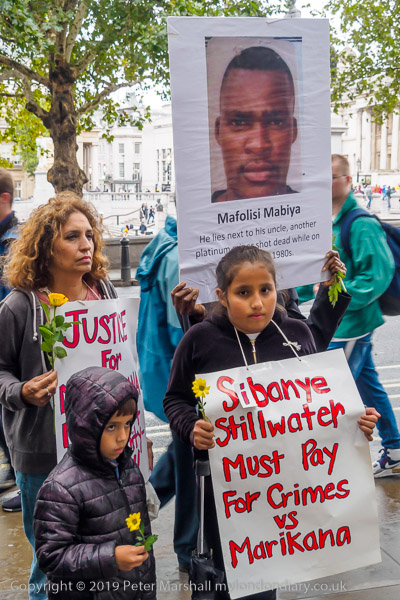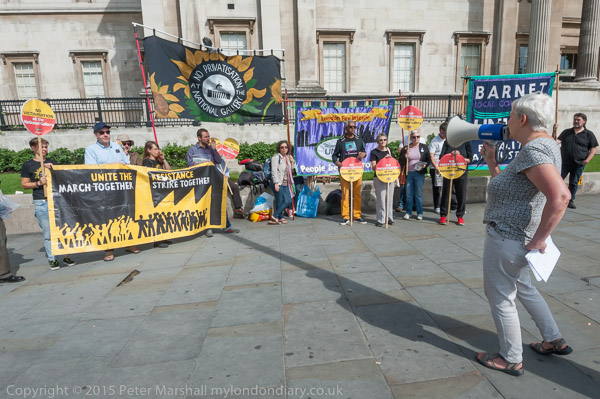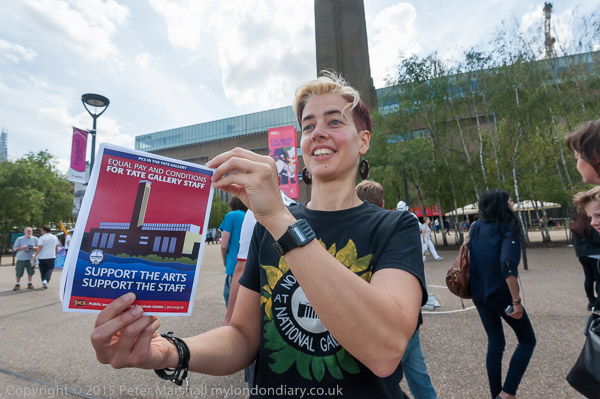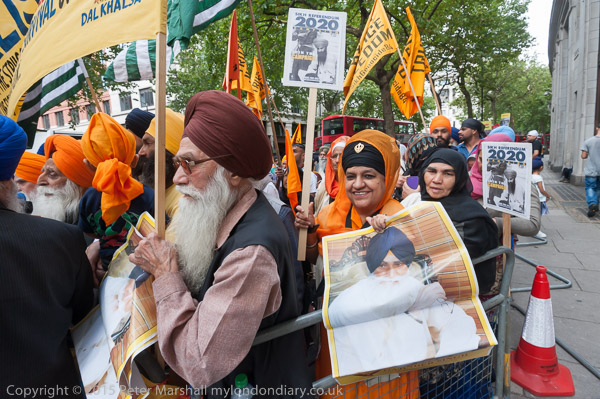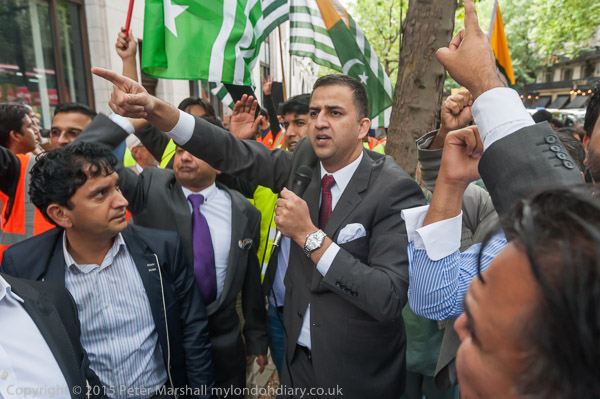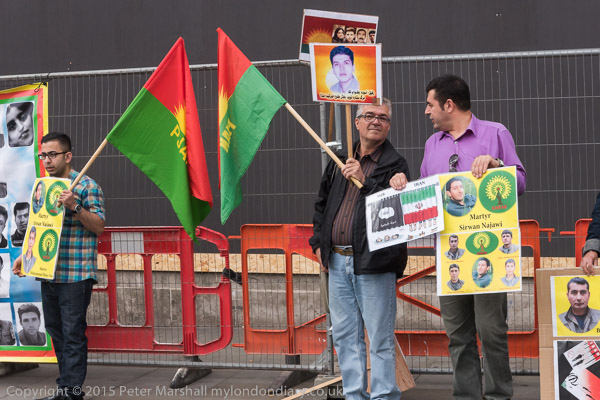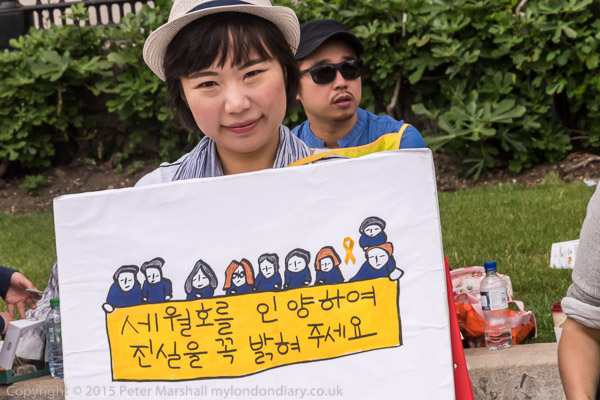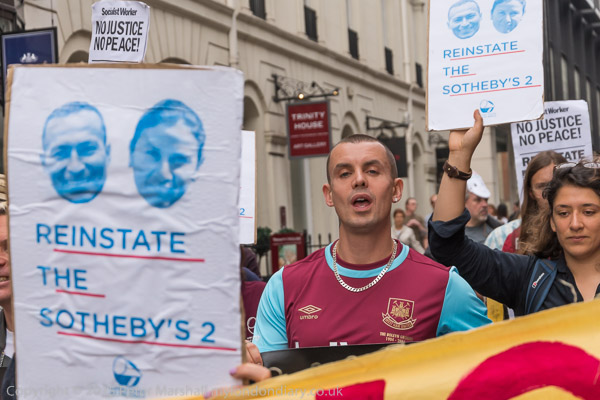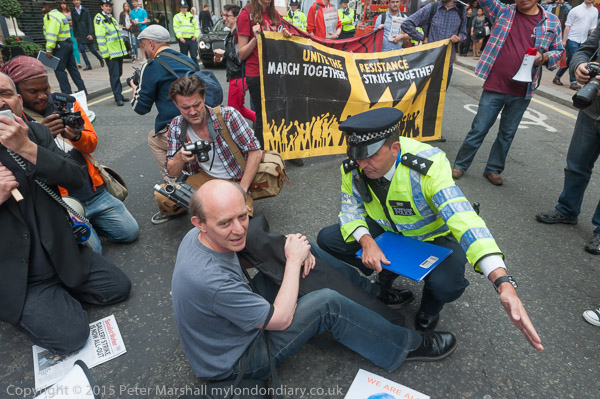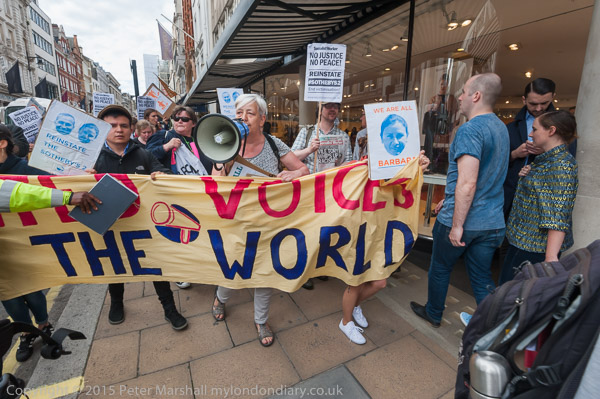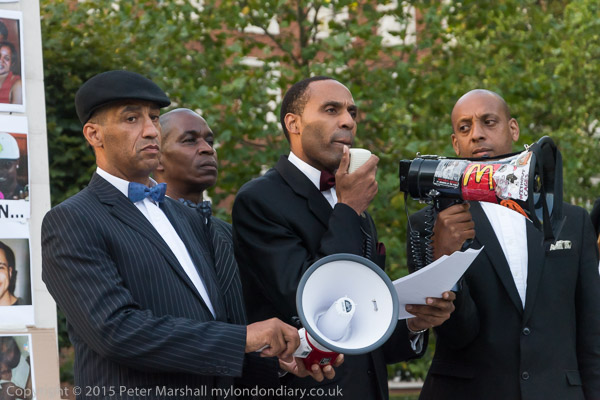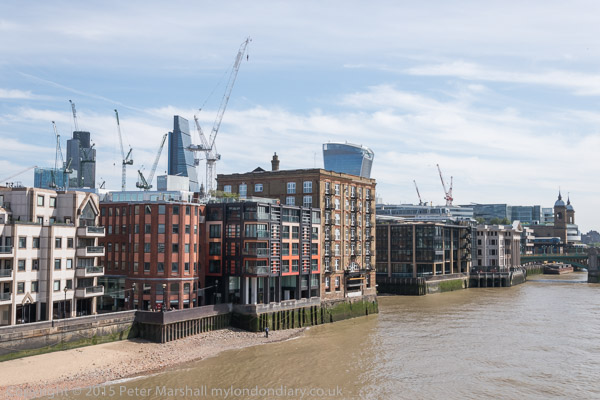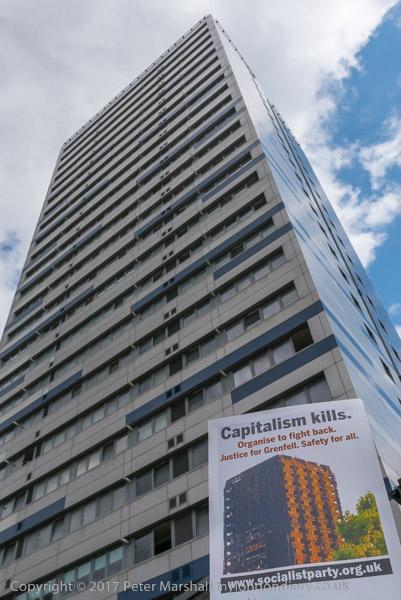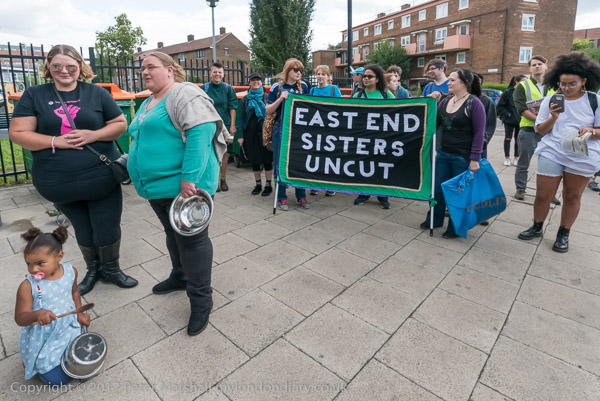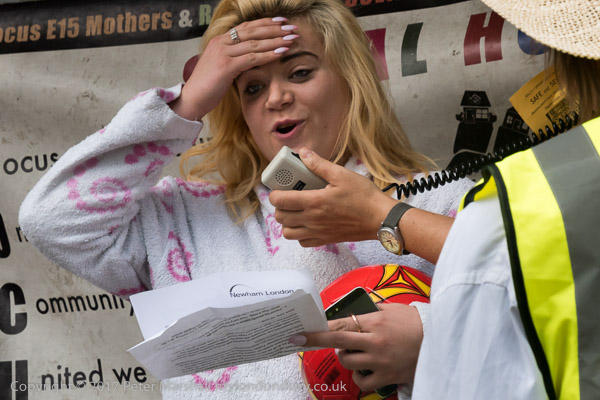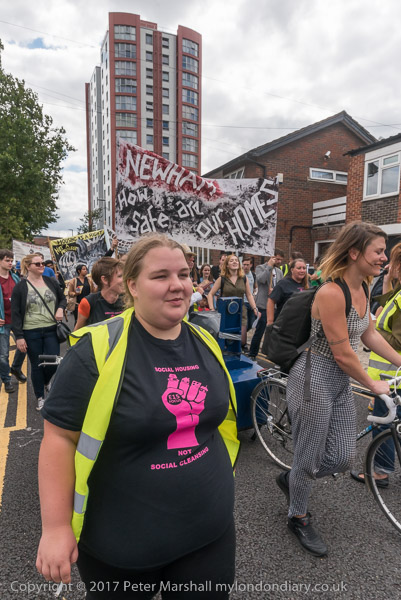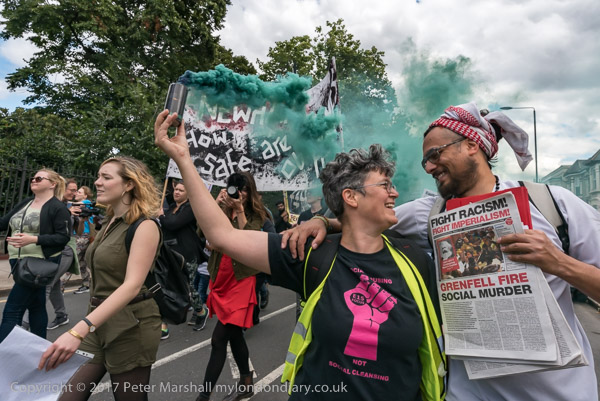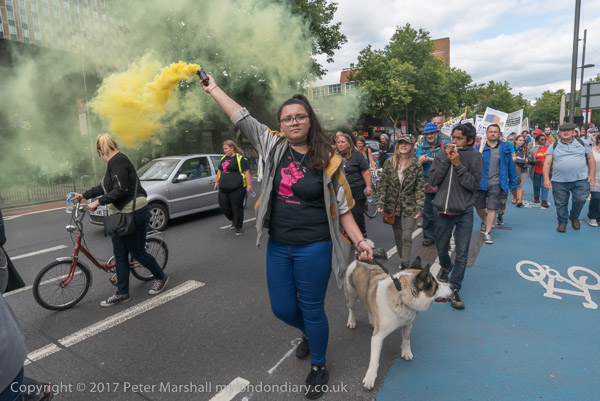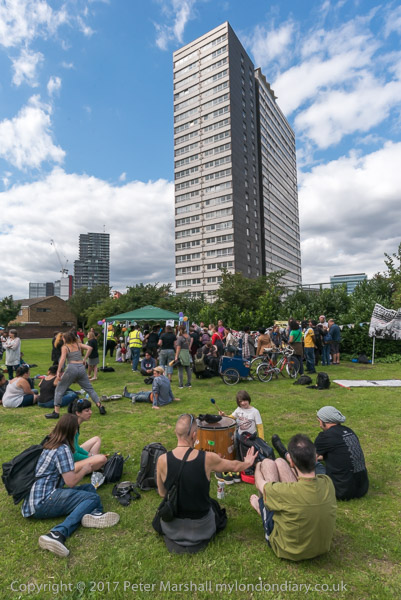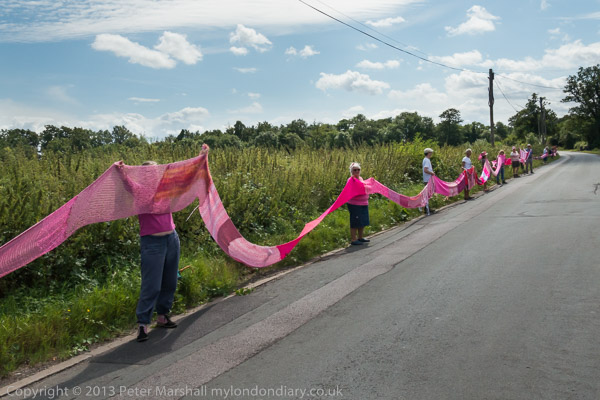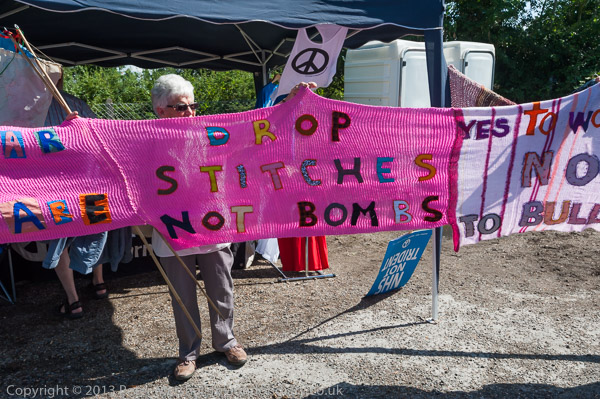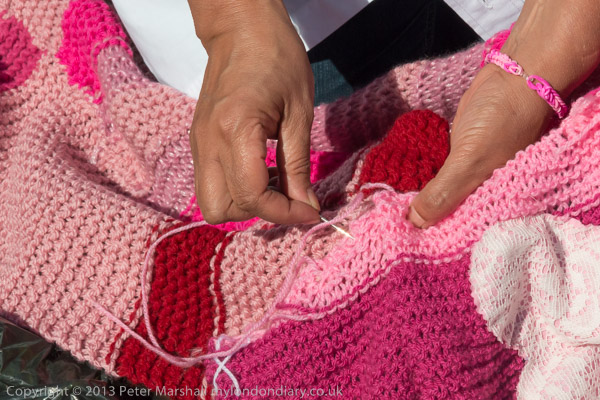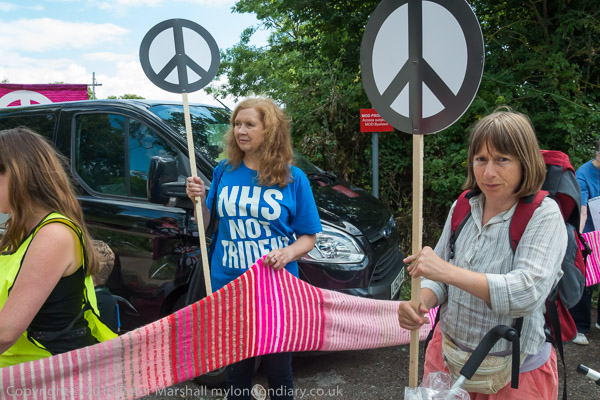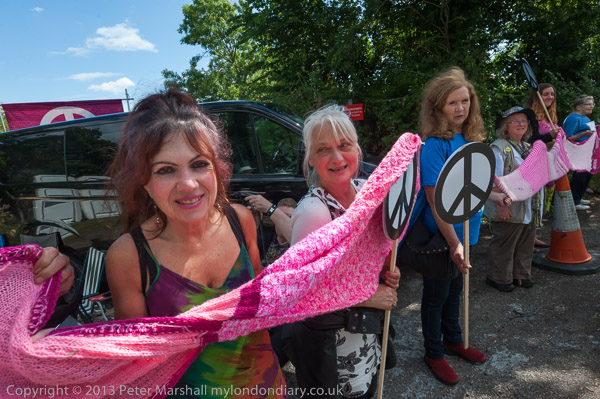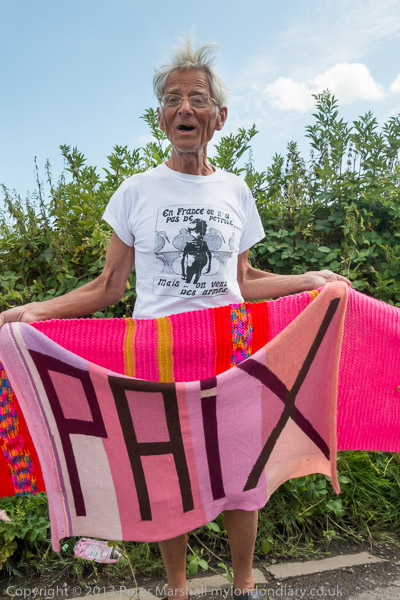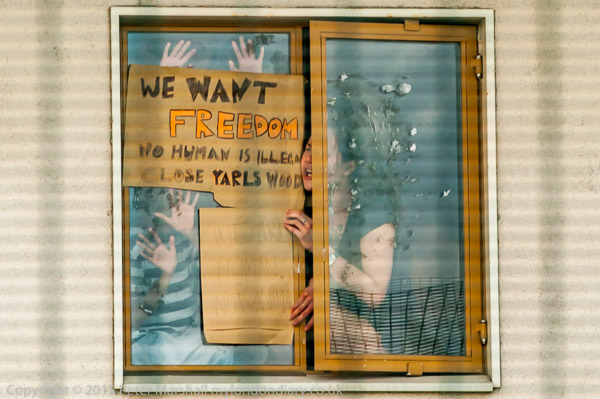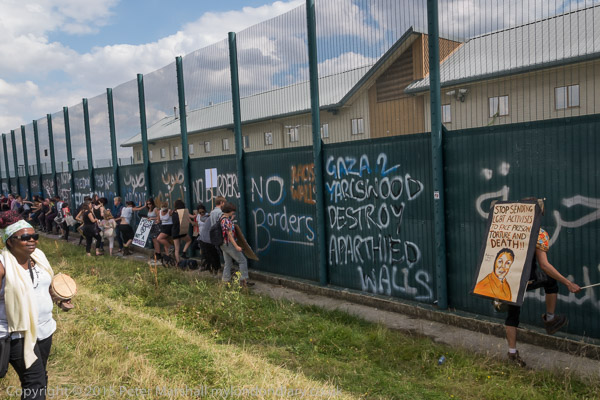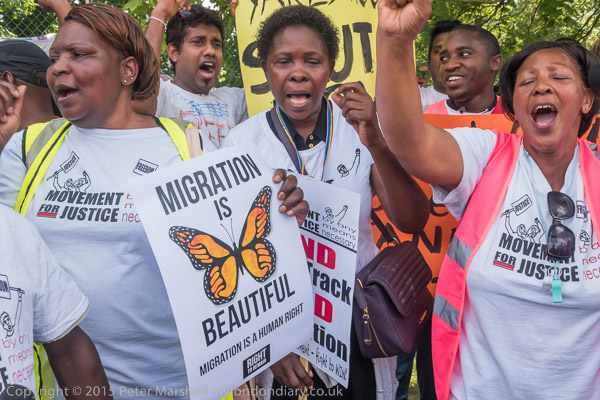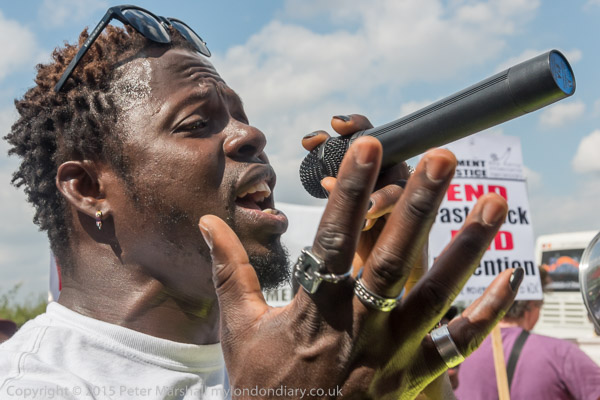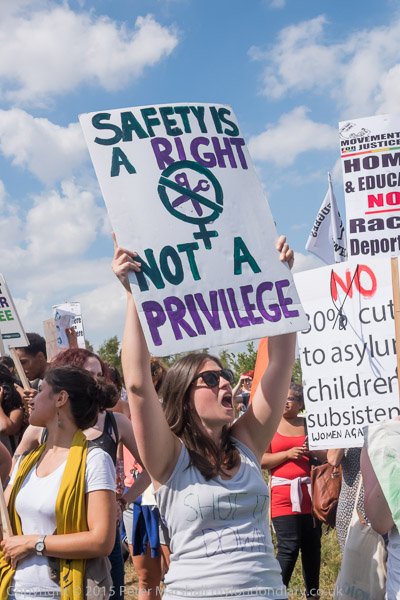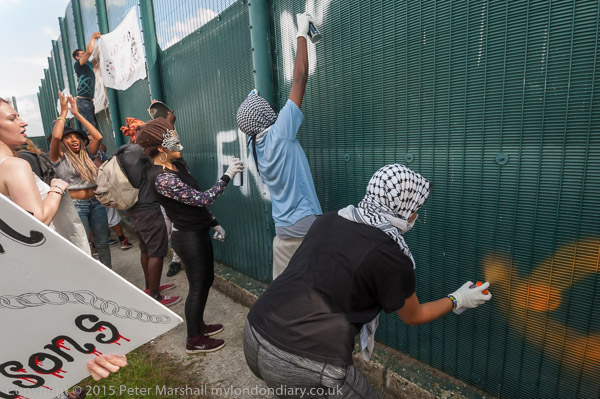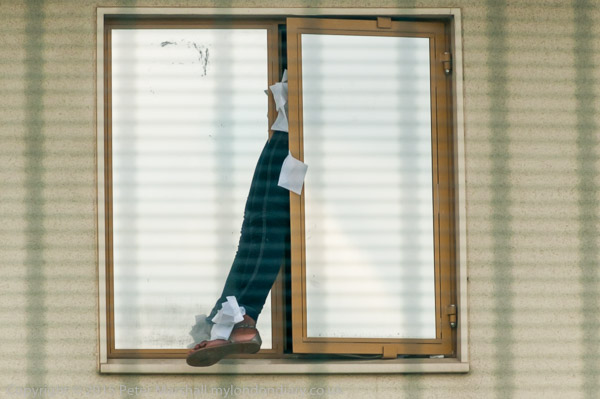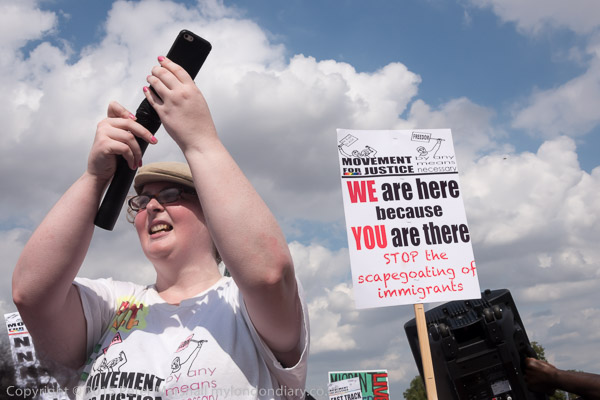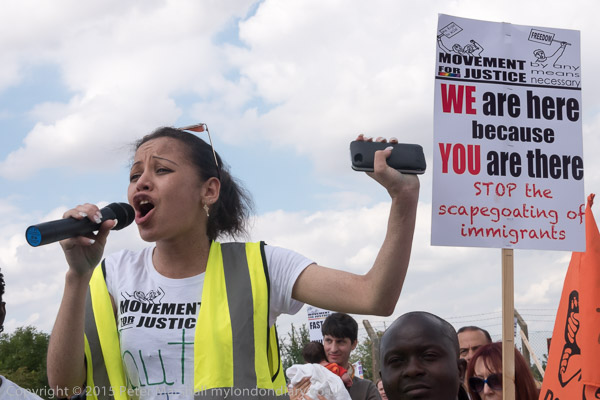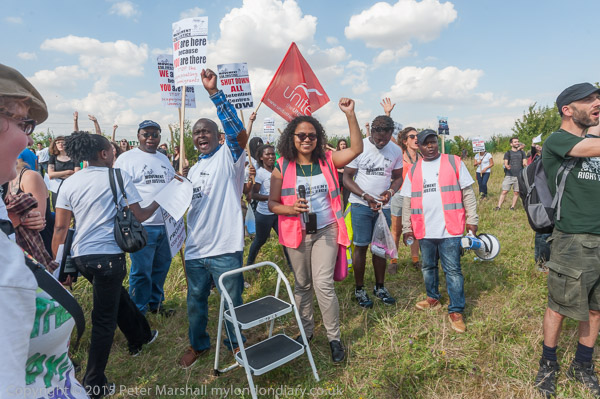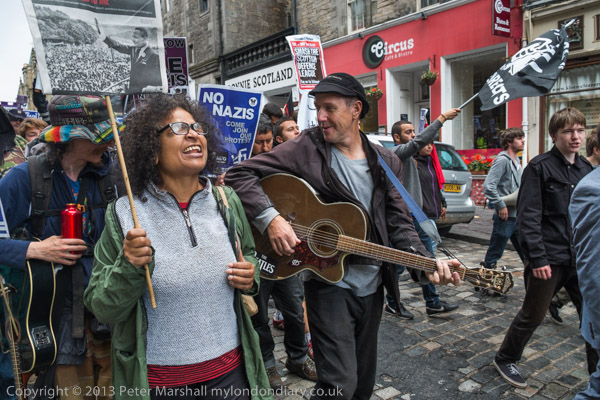
I seldom photograph protests outside London, and I hadn’t gone to Scotland to take photographs, but we had been invited to spend a week there during the Edinburgh festival. We’d never been to the festival before, and had timed our two previous stays in the city deliberately to avoid it, but decided to go and see what it was like. We did actually enjoy the week, but haven’t felt it was an experience we need to repeat.
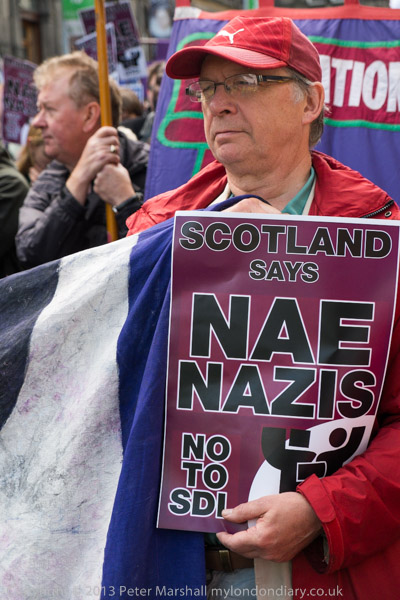
On Saturday 17th August we rushed out after breakfast to attend a play about a male clergyman and a female quantum physicist, time travel and religion; clever and quite funny but it was too early in the morning for me. However it was conveniently close to where Unite Against Fascism and others were gathering to oppose a march by the fascist Scottish Defence League, and while Linda went to listen to a classical concert I made the short walk to cover the protest – my first in Scotland.
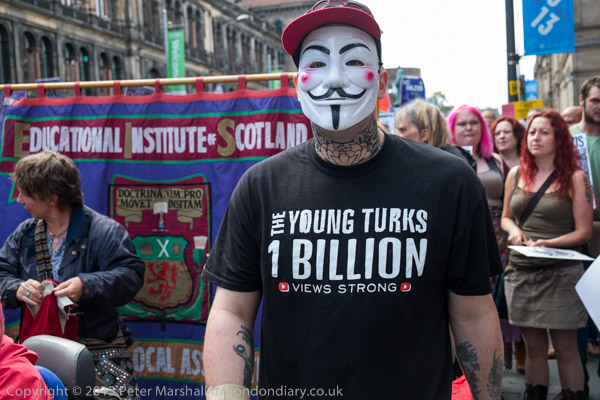
Like many such events in London it was slow to start. The assembly time was a couple of hours before the SDL were expected to march and the Scottish police were determined to keep the two groups as far apart as they could. But it gave me more than enough time to take pictures of the marchers and their banners and placards.
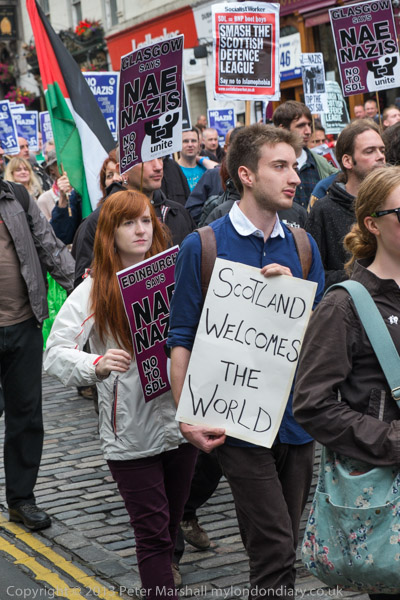
At the time all of my work on protests was made using Nikon DSLRs, but I’d left them at home when I came away for a week’s holiday, and all of these pictures were made using the relatively light and compact Fuji X-E1 and a single lens, the Fuji 18-55mm zoom. It was the first time I’d used the Fuji camera for a protest, and I did it a little less responsive than the Nikon, with slower auto-focus and sometimes a perceptible lag between shutter press and picture-taking.
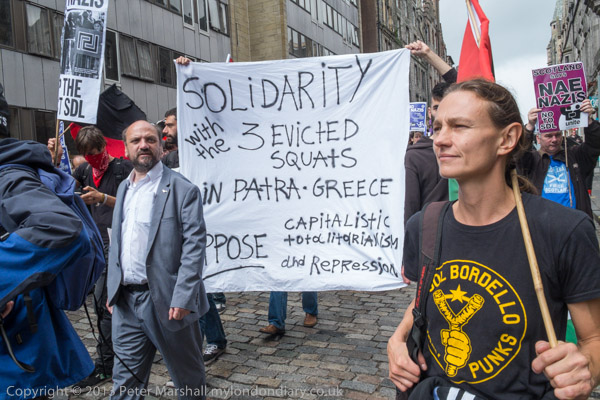
The electronic viewfinder couldn’t match the Nikon’s optical one either for clarity, and sometimes was noticeably slow to react when I moved the camera or zoomed the lens. And having just an equivalent focal length of 27-83mm I found limiting, missing both the extreme wide-angle and longer telephoto I usually worked with. But despite this I was reasonably pleased with the pictures from the day.

Eventually the march moved off and was escorted by police who kept them well away from the SDL as they marched to a large pen on Horse Wynd at the back of the Scottish Parliament. Approaching a thousand people had come to oppose the racist march.
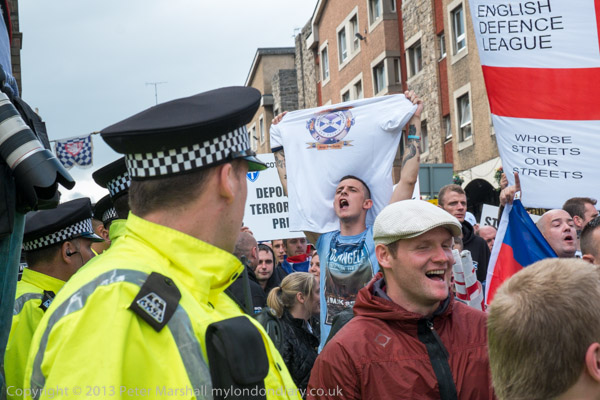
There was still no sign of the SDL, but I avoided the pen and walked back up Canongate to meet them coming down. Through a tight police cordon around the group of around a hundred I saw quite a few faces familiar from EDL protests in London – and some of them obviously recognised me and made threatening gestures.
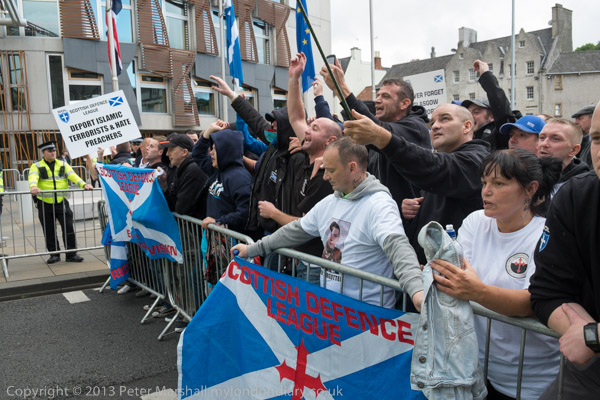
Once police had led them into a separate pen far enough away from the anti-fascists to prevent the two groups throwing missiles at each other but within shouting distance, it got a little easier to photograph some of the EDL. Although there were police lines stopping either fascists or anti-fascists from getting closer to each other a few anti-fascists found their way though the entrance area to Hollyroodhouse and were then arrested as they approached the EDL.

I left as the two groups were still shouting at each other to go to the Postgrad show at the College of Art before it closed, then on to a comedy show and finally to a meal with the dozen of us who were sharing a large flat at a convenient Thai restuarant. We were up early the next morning to catch a train back to London.
